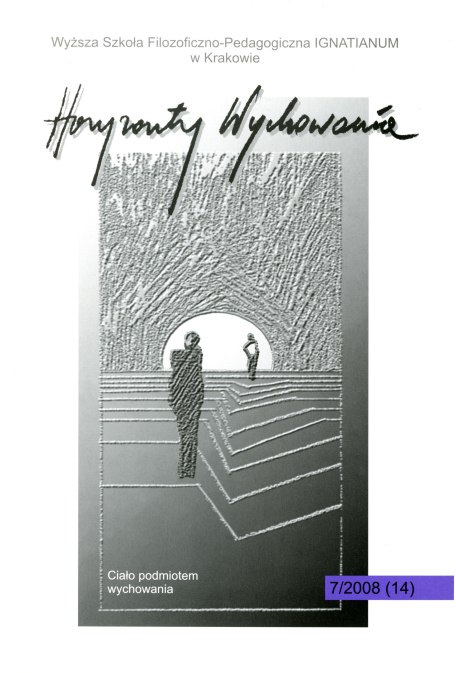Cenne ludzkie ciało
Abstract
In Indian tradition, the problem of the body cannot be examined irrespective of the ontological, anthropological and cosmological paradigm. In Brahmanism this paradigm was founded on cosmogonic schemes contained in the holy Vedic texts. The hymn Purusha Sukta presents the creation of the world from Pre-man; the word purusha stands for man. The primordial fi re rite resulted in the coming into existence of the whole world together with shaped and therefore divine – conditioned by the transcendental dimension of reality, with the social system and entire visible and invisible world. The most signifi cant issue emerging from this story is the conviction that the world which we perceive, the world we live in has not been created by God the Creator out of nothing, that there is no rift between divine and human nature, but the whole reality – including the one in the most external dimension, perceived as carnal – is the transformation of the divine element. And all these assumptions can be seen in all activities which we undertake to realize any activity, to reveal our abilities or capabilities. They are also seen in all these procedures which man – in all his psychophysical entirety – is subject to. Other forms of working with the body are considered in a similar way, for instance dance, theatre, or even martial arts schools. Yoga, as a point of reference for any activities is the procedure which ultimately leads to the transformation of consciousness, but it engages the whole psychophysical organism. The practice of yoga restores the primordial sense of measure and proportions. Physical activities and taking care of the body are essential, because they keep the psychophysical organism in health and harmony.Copyright (c) 2017 HORIZONS OF EDUCATION

This work is licensed under a Creative Commons Attribution-NonCommercial-NoDerivatives 4.0 International License.
Authors who publish in this journal agree to the following terms:
- Authors retain the copyright to their work while granting the journal the right of first publication. The work will be simultaneously licensed under a CC BY-ND license, which permits others to share the work with proper credit given to the author and the original publication in this journal.
- Authors may enter into additional, non-exclusive agreements for the distribution of the published version of the work (e.g., posting it in an institutional repository or publishing it in another journal), provided that the original publication in this journal is acknowledged.
We allow and encourage authors to share their work online (e.g., in institutional repositories or on personal websites) both before and during the submission process, as this can foster beneficial exchanges and lead to earlier and increased citations of the published work. (See The Effect of Open Access). We recommend using any of the following academic networking platforms:





